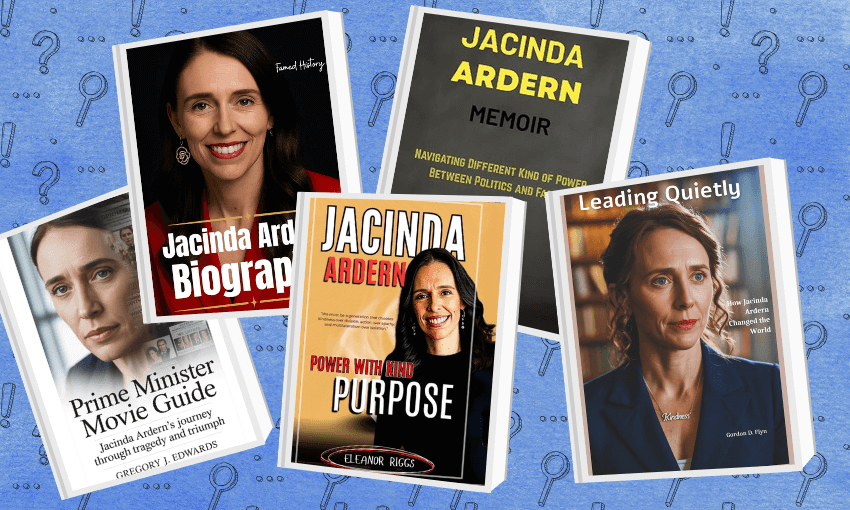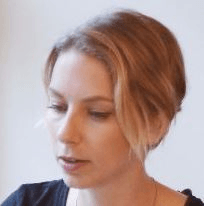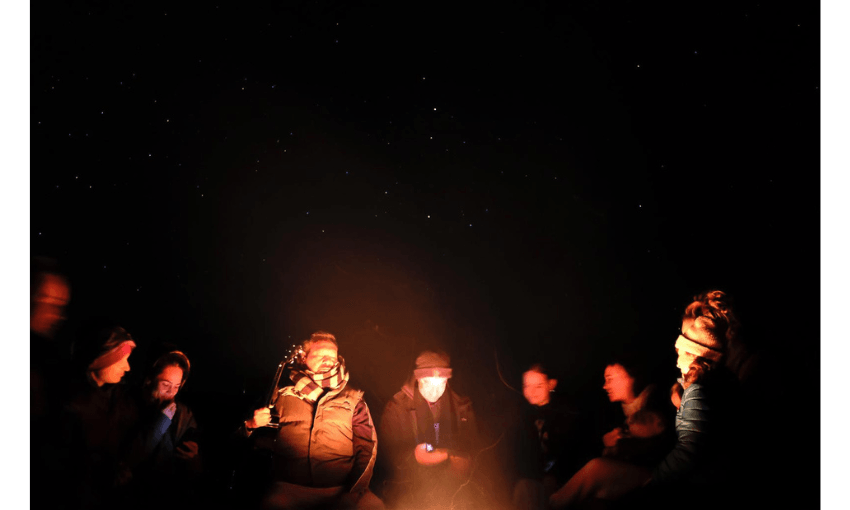Claire Mabey reviews the novel about a New Zealand summer that caught the attention of one of the world’s most famous agents and is being released in multiple countries, with a film adaptation attached already.
Jennifer Trevelyan’s pathway from unknown author to international name is a particularly compelling one. Media attention has been hot and close this past week as A Beautiful Family is released in Aotearoa, Australia, the US and UK. On RNZ’s Nine to Noon, Trevelyan told Kathryn Ryan how she’d been writing away for a decade before she finally felt she had a manuscript worthy of sending out to an agent. Felicity Blunt – renowned literary agent – responded (for the uninitiated, this is notable in itself: it is extremely hard to get an agent, especially such a huge one) and the fairytale trajectory from hopeful scribbler to signed-up writer was set into motion.
Blunt sold the book into multiple territories, secured Trevelyan a two-book deal, and sold the rights to the film, which already has Niki Caro down to direct. Trevelyan told Ryan that her one wish is that it is filmed in New Zealand. Without knowing anything about the novel, this is an extraordinary story. It is notoriously hard for New Zealand writers to crack the international market: not many manage to do it and certainly not via the pull power of Felicity Blunt, who represents Meg Mason, Jilly Cooper, Claire Keegan and Bonnie Garmus among others. It’s the kind of dream-come-true that gives hopefuls just enough to plough on with. Though the chances of such a sequence of events happening again is so slim it’s hard to imagine it repeating anytime soon.
I received a limited edition advance proof of A Beautiful Family a few months ago with the number 137/150 handwritten on the promotional cover, which read “if you only read one book in 2025 make it this one”.
I have to admit that at this point in the game I’m skeptical of such commands. I get a lot of advance copies with grand promises and I don’t read them all: that would be more than a full time job. I put the book in my pile and frankly forgot about it until a week ago when I was looking through my to-be-read piles trying to find something that I’d be able to read quickly, and that might hold my attention over a gloomy, frigid day in which I was stuck inside with a head cold.
Enter, the child. Trevelyan’s narrator is 10 years old. She’s unnamed until the very end of the book (I won’t reveal it here: best to find out for yourself). It’s this naive perspective that makes A Beautiful Family both easy to read and impossible to put down. The narrator’s innocence is pitted against several disturbing factors, all orbiting her summer in various shapes and shades, and it’s that persistent dance of disturbances that creates the sustained and unrelenting tension in the novel.
Child narrators aren’t uncommon in adult literature but the decision to use them is fascinating to me. Catherine Chidgey’s The Book of Guilt uses the perspective of three siblings to tell that sinister story; John Boyne’s The Boy in the Striped Pyjamas is a famously affecting use of the child’s perspective to tell a holocaust story – the adult reader immediately understanding what the child characters do not. This distance between the child narrator and the adult reader is where sickening suspense lies: as adults we know more than they do and all we have left is to hope that, in this story, we’re wrong.
A Beautiful Family is set on the Kāpiti Coast in the 1980s. We know this because Trevelyan is meticulous with her references to the time period: the child’s prized possession is a Walkman through which she plays Split Enz; The Exorcist has aired on TV; there are Seventeen magazines with sealed sections; the child and her sister Vanessa get terrifically sunburned and only after getting blisters does their mother buy some SPF15. There is also casual racism at play in varying degrees of intensity. A Chinese family is talked about in grotesque terms; a Māori character is described as having “skin the colour of burnt caramel”. It makes you grind your molars until you remember that this is the 80s and such clangers were horrifyingly commonplace.
The question that came to haunt me as I read A Beautiful Family was from what distance is this child narrator telling her story? The voice is in first person, past tense, which indicates that there is space between the events and the telling of them. But it’s never made clear how much space: only a couple of moments where the narrator says directly that she doesn’t remember a certain detail. For some reason this struck me and niggled at me. I suspect that not many other readers will be at all concerned with this but I wished for those intimations of distance to be either removed or embellished because, for this reader at least, it made me question memory, naivety and the precise impact of the story on its teller. Trevelyan has revealed herself to be a perfectionist and a very careful writer so I doubt that this ambiguity is erroneous, but rather a deliberate nod towards the way core childhood memories stay, and replay.
Because this is a summer that lingers: it’s the kind of childhood scenario that would lodge itself in the brain and return to the mind’s eye with changing lenses as you aged. It is immediately clear that the child’s parents are unhappy and that Vanessa (the sister) has struck a particularly unpleasant and caustic stage of her teenage years. The child is left largely to her own devices until she meets Kahu, a young boy, and he tells her about Charlotte who disappeared from the beach one summer when she was nine years old.
The book is haunted by Charlotte in several ways. As an unsolved mystery it gives the two lonely children something to investigate; and it adds an extra element of suspicion to the dead-eyed neighbour that trains his gaze over the child and her family. Trevelyan carefully places her threats: there’s the simmering unhappiness between the parents; clear signs of an affair; a very creepy neighbour; and the sea.
Children are frequently left alone at the beach in this story. While the descriptions of diving in and out of the waves like dolphins are charming, nostalgic, you’re left to worry about drowning. New Zealand has horrendous child drowning rates. Our losses make it very hard to read a local novel where the sea laps and waits for unsupervised children. You’re left to shout into the pages for the adults to focus on their kids for once; to shout “remember Charlotte?!” The mother character is one of the most intriguing figures in this novel where the adults are so absent they’re almost abstract. She’s having an affair (this is made obvious early on), and she’s trying to write a book. At least, her child thinks that’s what she’s doing. Whatever it is she’s scribbling, it lets her take her eye off the ball: helps her escape her family, escape parenting, her miserable marriage, her surroundings.
Early on we learn that the mother usually demands they holiday in remote places. So her family finds it unusual that this summer she wants to go “where there are people”. It becomes clear that the affair has a lot to do with this change of heart; but what I found most interesting was the depiction of the writer as selfish, self-isolating and self-destructive. I suspect that many women of a certain age will empathise strongly with her, particularly in contrast to the man she married. Through his child’s eyes we get glimpses of a father who thinks it’s not his job to chaperone the children on the beach; who is friendly enough but who is quietly fuming about his marital situation; who is racist; and who enacts a violence that will severely scar any of Trevelyan’s readers who are writers.
A Beautiful Family reminded me, to some degree, of the film Little Children (2006). Ostensibly a movie about an affair, it becomes, in dramatic fashion, a story about the selfishness of adults: the damage they can cause to the children they like to think are unknowing and unseeing. Trevelyan’s story plays a similar trick in that its mystery centres on a missing girl, a creepy man, and the terror that experimenting teenagers can inflict upon themselves and others. But this is really a novel about parents: about what they don’t see, what they distract themselves with (cricket, BBQs, projects, affairs, discontents) and what they miss.
But what of that bold claim on the proof copy? A Beautiful Family is well written, it’s immersive, and it is haunting. It’s a novel that will prompt you to look back over your own childhood and assess the threats; the fast friendships; the collisions with siblings and strangers. A Beautiful Family has an atmosphere and an eye for place that means it has the potential to make a good Aotearoa noir film and one hopefully filmed on the Kāpiti Coast. I can see why Felicity Blunt was so confident about this novel: there is a universality to the way the child observes danger, weathers the storm of family, is plagued by what she remembers. There’s a cinematic quality to the writing.
But I hope you read more than one book in 2025. New Zealand is producing so much compelling fiction: more of it deserves to be read, discovered, and helped to go big. Hopefully Trevelyan’s success will help kick that door open a little wider.
A Beautiful Family by Jennifer Trevelyan ($37, Allen & Unwin) is available to purchase from Unity Books.








